Think you’ve eaten wasabi before? Chances are you probably haven’t, even if you’ve visited Japan or eat Japanese food on the regular.
It’s quite shocking to realize that a condiment seemingly so common and freely available at your local sushi chain or in a supermarket bento, is in fact, not very common at all.
So, what is wasabi exactly, how is it made and grown, and why is so much of it fake?

Table of Contents
What is wasabi?
Wasabi is the spicy green paste that is often served with Japanese dishes, primarily sushi and sashimi, as well as soba for an extra kick to taste in the dipping sauce. It can also be enjoyed with other foods that the added spiciness complements, such as roast beef.
Many people consider wasabi a kind of super food because it’s packed with Vitamin C and also has a number of antibacterial properties. It comes from the grating of the thickened stem (rhizome) of the Wasabia Japonica, which belongs to the same family as the horseradish, but is a different plant. Therefore translating wasabi as “Japanese horseradish” is technically incorrect.
Not only is horseradish a completely different color (horseradish white and wasabi green), the main part of the plant, the “flesh” if you will, is also different; we harvest horseradish for the root and wasabi for the stem (rhizome). All parts of the wasabi plant – the rhizomes, roots and leaves – are harvested, processed and valued for use. However, it is the rhizome where most of the flavor is concentrated and the part that produces the paste we most associate with wasabi.
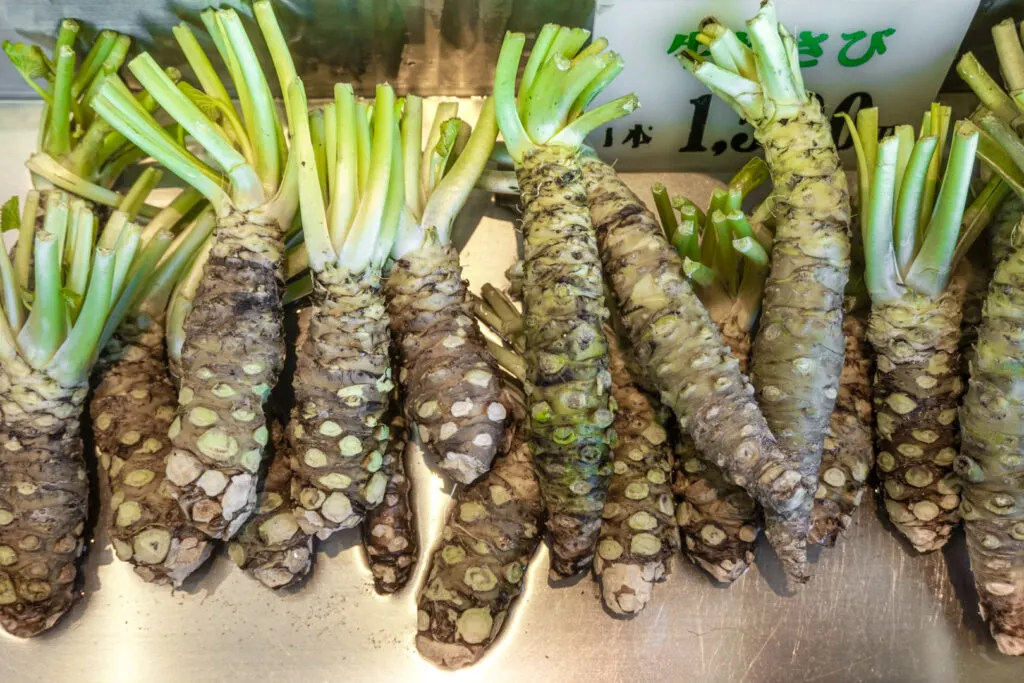
What is wasabi made from (ingredients of wasabi)?
Many people ask what wasabi is made from, looking for information on wasabi ingredients or perhaps a recipe on how to make wasabi at home. However, the actual answer is there is only one ingredient of wasabi and that’s wasabi!
To make wasabi, one simply has to grate the rhizome of the Wasabia Japonica plant and it instantly becomes wasabi paste ready for consumption. There is no mixing or any other kind of preparation involved.
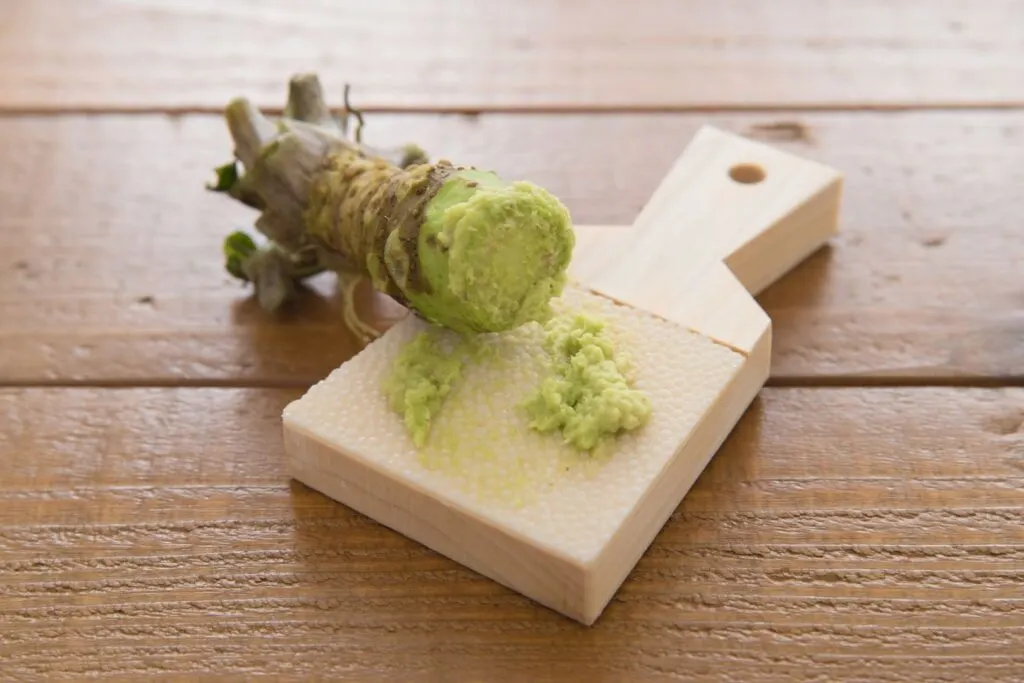
However, most condiments presented as wasabi in stores and restaurants are actually not the real deal; in fact at least 90% of “wasabi” in Japan is fake, and an even higher rate internationally. So common is this practice that you probably didn’t even think twice when viewing the green blob in the first image in this post, which is indeed an imitation. Experts estimate that 95% of restaurants in Japan use fake wasabi, and around 99% in countries like the United States. That’s a lot of fake wasabi!
This fake concoction is actually horseradish that is usually mixed with mustard and green food coloring – that’s how this white root appears green and perhaps also why wasabi is confused as horseradish. Thickening agents like cornstarch as well as chemical stabilizers are also common.
How to tell real wasabi from fake wasabi
Tell-tale signs that it’s not real wasabi include a very green color (thanks to that green food coloring) and an intense kick in the nasal passages upon consuming it. This is basically every sushi chain I have ever been to.
Fresh, genuine wasabi is actually rather mild in comparison. You may still feel a bit of a burn and do a little rabbit nose twitch, but it’s not the really harsh kind that has you screwing up your face and holding the bridge of your nose.
The color itself is notably paler and the taste is sweeter and more herb-like. The texture is also grittier as it is grated directly from the plant, whereas the fake variety is often processed into a smooth paste that can range anywhere from the consistency of toothpaste to play-doh.
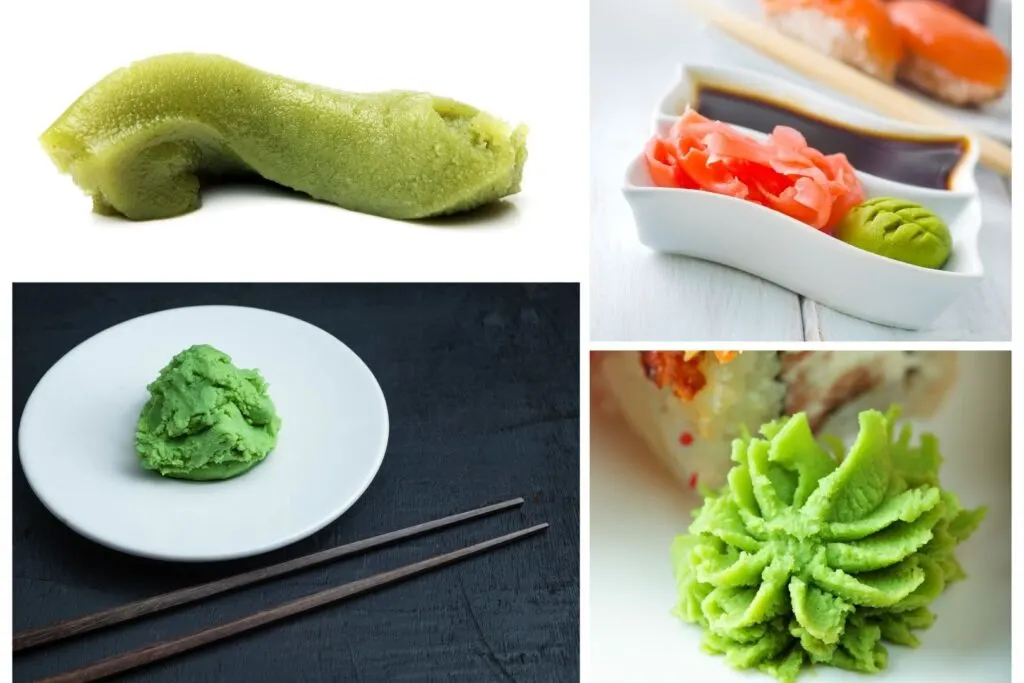
Another way to assess the authenticity of wasabi is to think about where and how you are consuming it. If it comes in a packet, tube or is otherwise sitting as a condiment on the table, it is most likely not real wasabi.
This is because once grated and released to the open air, genuine wasabi only holds its signature flavor for about 15 minutes. That’s where the custom of putting the wasabi under the fish on sushi came from – it holds the kick for that little bit longer!
To add more confusion into the mix, however, there are wasabi pastes that do utilize a genuine powdered form of the Wasabia Japonica plant. If you are wanting to try this over the standard horseradish imitations, you should look for the wording Hon Wasabi (本山葵, 本わさび, ほん・わさび), which means ‘real’ wasabi.
Do keep in mind though that to conserve this as a paste, it will likely contain the same types of chemical stabilizers and other ingredients used in the horseradish varieties, an unavoidable reality of many processed products we consume. Also despite using real wasabi as a base, sometimes mustard is added anyway. Take a look at the ingredients before purchasing to find one without added mustard if that is important to you.
Therefore if you are wanting to try pure, unadulterated wasabi paste, there is only fresh and grated to order. However, Hon Wasabi in a tube, despite being smooth and a completely different mouthfeel to the stuff straight from the plant, is the next best thing.
Why is most wasabi fake? How is wasabi grown?
If it’s so easy to grate real wasabi, then why bother making a fake version with horseradish? Aside from the fact that it can’t be prepared in advance and used for pre-packaged meals, the very simple answer is that Wasabia Japonica is extremely difficult to cultivate and hence is very expensive.
Wasabia Japonica is renowned as being a particularly finicky plant and requires very specific conditions in order to grow. This includes semi-submersion in moving spring water and a steady temperature. Wasabi is usually grown in flooded gravel beds and requires a constant source of very clean water.
The Daio Wasabi Farm in Nagano Prefecture, the largest wasabi farm in Japan, for example, is located in one of the few locations in the country where conditions are ideal. The farm sources the 120,000 tons of pure, spring water it needs per day for its 150 ton annual yield from the nearby Japanese Alps, which you can also see from the farm on a clear day. The water itself is kept at a constant and crisp 13 degrees Celsius (55.4 degrees Fahrenheit) all year round. As wasabi plants are very sensitive to harsh sunlight, from May to October the plants are covered with black shade cloth.
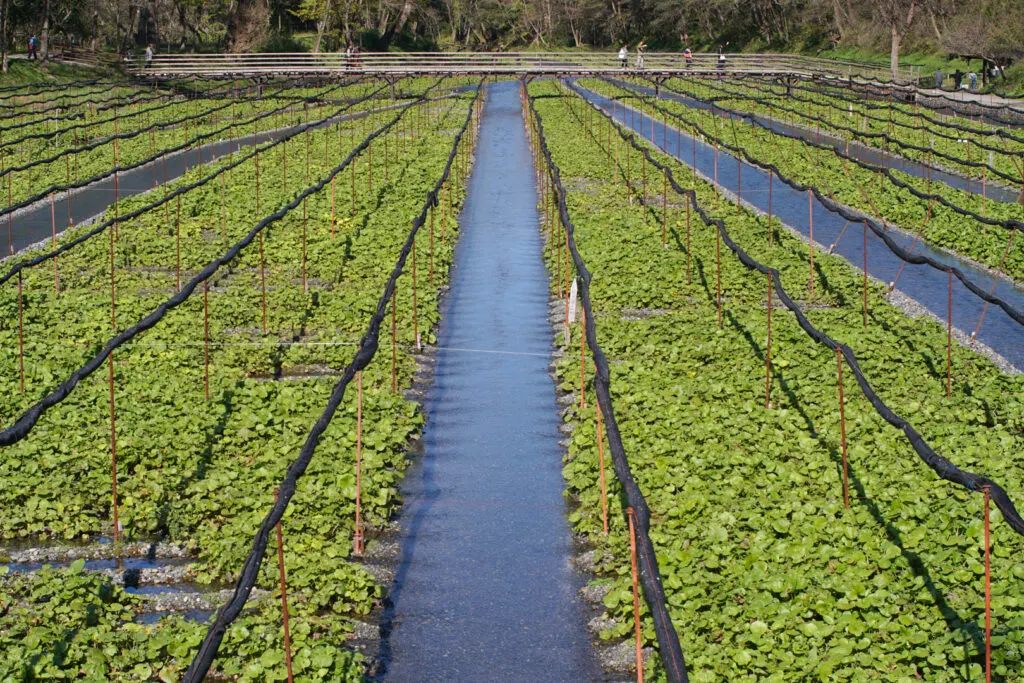
The time from planting to harvest is also considerable with wasabi taking 1-3 years to mature, after which time you may pull up a big wasabi stem or just a baby one. Large wasabi rhizomes are prized and a single one can fetch 10,000 yen (around US$100) in big cities like Tokyo, and even more when exported. On the other hand, horseradish grows bigger and more quickly, and can be produced far more cheaply, while still somewhat mimicking the wasabi flavor.
The cost alone means that it is not practicable for a conveyor belt sushi chain or an average Japanese restaurant to serve real wasabi paste as it would equate to an added cost of several hundred yen (several US dollars) per serving; a price that the average consumer is just not willing to pay. Coupled with the fact that once harvested, fresh wasabi has a very short shelf-life – the rhizome stays good for just a couple of weeks in a crisper or bag in the refrigerator – and it’s easy to see why the more cost-effective and convenient horseradish has become the world standard wasabi substitute.
Where to try real wasabi
If you want to try real wasabi, your best bet is a high-end Japanese restaurant (particularly those serving high-quality sashimi), visiting an area in Japan where it’s locally-produced, or by finding a genuine grower or supplier online.
Once you taste the fresh stuff, you’ll probably find it quite easy to distinguish the real from the fake going forward, and realize that it should never overpower but enhance the main ingredient, creating a delicate balance of flavors. After all, you wouldn’t want to buy expensive fish and not actually taste it!
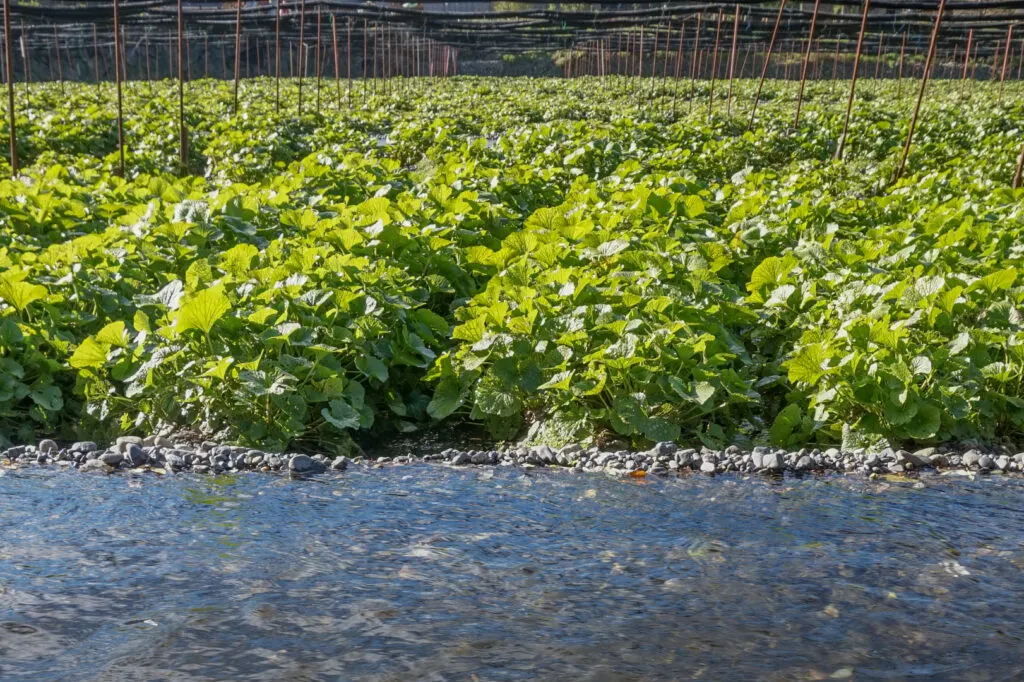
If you’re traveling in Japan and want to sample fresh and delicious wasabi straight from the source, I recommend a visit to the more than 100-year-old Daio Wasabi Farm in Azumino City (Nagano Prefecture). It’s completely free to enter the grounds to see how this spicy condiment is cultivated and taste-test some freshly-grated rhizome.
There is also a souvenir shop as well as on-site eateries that sell a range of wasabi-infused and -inspired products including burgers, ice cream and even beer!
While wandering the grounds, you might want to:
- Visit the Daio Shrine, where the spirit of Hachimen Daio, the farm’s namesake and protector, is said to be enshrined. Nearby the shrine is also a small cave related to the local hero’s legend.
- Check out the water mills. These were constructed for the filming of Kurosawa Akira’s 1990 movie ‘Dreams’ and have been left standing.
- Have a go at picking your own wasabi as a take-home souvenir (paid) or buy a ready-picked rhizome
- Take a ride in a clear bottom boat (from late April to late October – paid)
- Take a commemorative photo with the wasabi statue
- Check out the on-site store for some wasabi souvenirs to take home with you – they even have wasabi wine!
- Taste all the amazing wasabi products on offer!
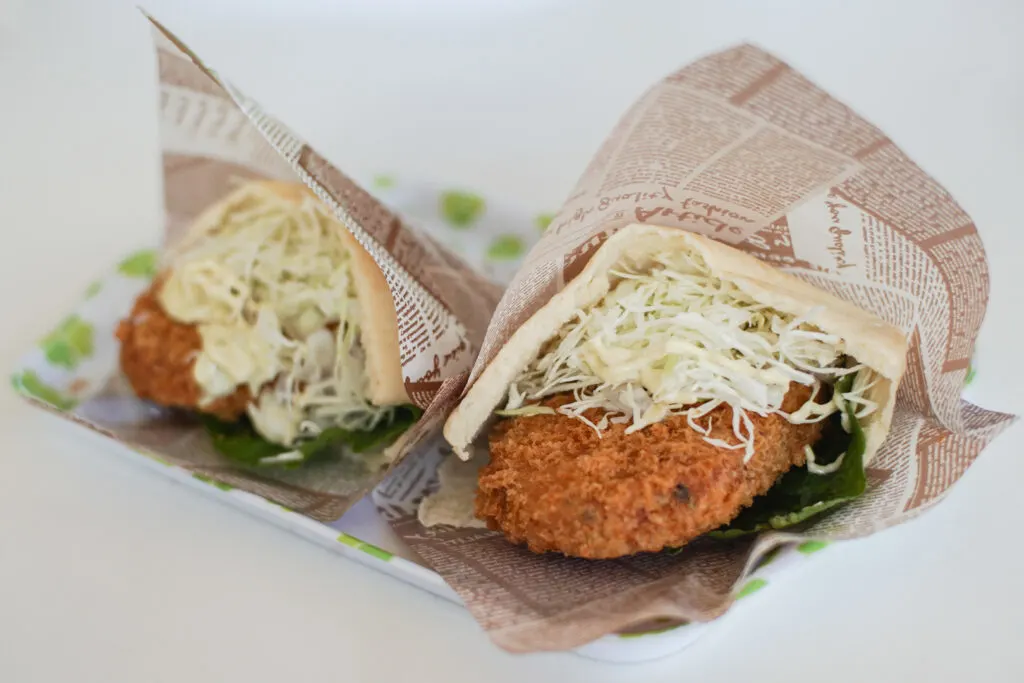
ACCESS: Daio Wasabi Farm is located approximately 3 hours away by train or car from Tokyo. From Hotaka Station, it is a 10-minute taxi ride or a 40-minute walk. Bicycles are also available for rent for 200 yen/hour outside Hotaka Station. If you’re driving, there’s a large carpark at the farm entrance. Both farm entry and parking is free.
Also see our food guide on Shuzenji, a wasabi growing area and hot springs town just 2 hours from Tokyo in Shizuoka Prefecture, where basically every restaurant in town serves up real wasabi with its meals (and even with desserts and drinks).
What have your experiences been with wasabi – real or fake? Do you like it?
Pin me for later
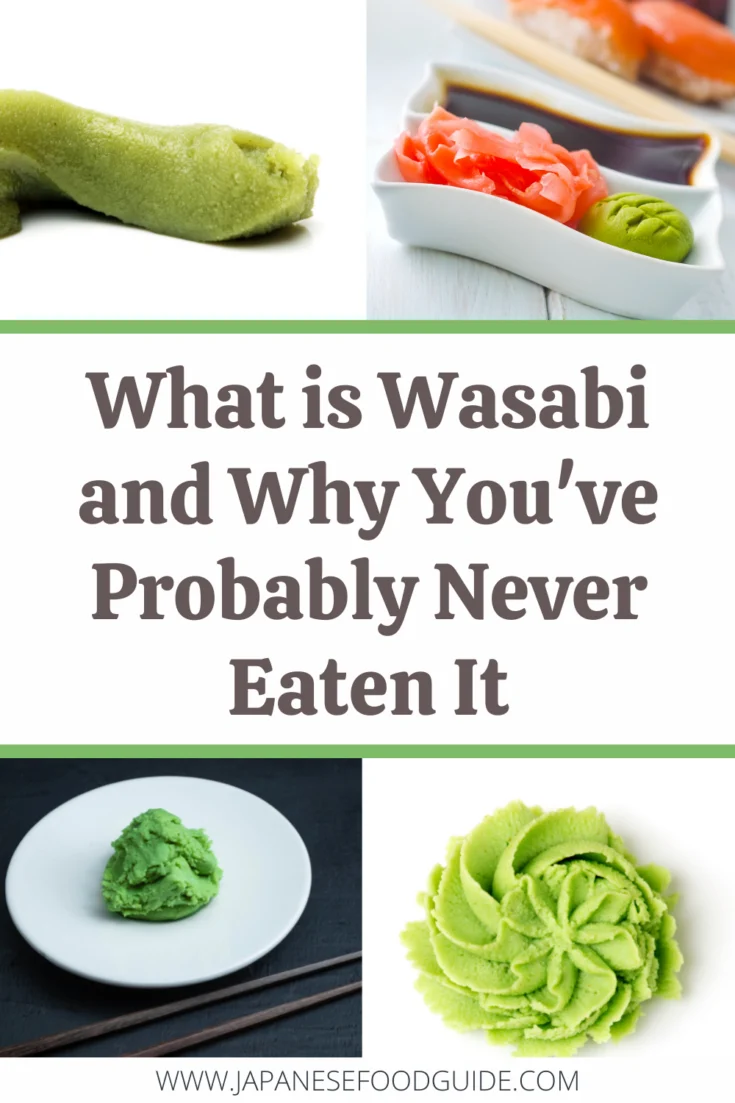
Jessica Korteman is a seasoned travel writer from Melbourne, Australia. She has spent a decade living, working and traveling in Japan, and specializes in Japanese culture, festivals and events, and travel destinations both on and off the beaten path throughout the country.
She is the Founder and Editor of Japanese Food Guide.
